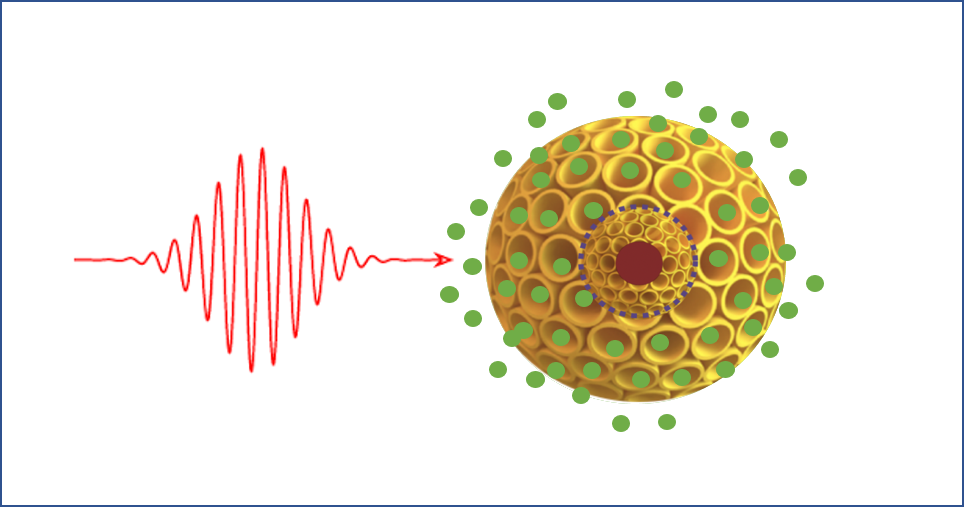Nanomachines are nano-objects able to transform the energy brought by a stimulus (light, heat, chemical reaction…) into a nano-movement. For instance, when the pores of mesoporous silica nanoparticles are closed by a supramolecular valve, nanomachines are obtained, that can convert a stimulus into the movement of the valve, thereby into the opening of the pores (Figure1). This has been used for the locally controlled delivery of drugs, precisely where the stimulus is applied.1 Gold nanostructures (nanospheres, nanorods, nanostars…) are widely used for their plasmonic properties. Indeed, at certain wavelengths, they can strongly absorb light and convert it into heat. This temperature elevation has been used to disassemble supramolecular nanovalves, as shown in the figure.
Whereas the electric field at the surface of gold nanoparticles has been well modelled, the corresponding temperature elevation has been ill-reported. In a recent report, we have modelled this temperature elevation at the surface of gold-silica nano-objects, and found it to be almost negligible under standard conditions (ca 10-4 K for 1 W/mm²), although the corresponding nanoparticles are able to heat the solvent with a considerable temperature increase (ΔT up to 30 °C).3 This suggests the occurrence of a collective effect in the macroscopic heating rather than an elevated temperature of each of the individual particles, as often reported.
This project aims at deciphering experimentally this controversy, by actuating nanomachines based on gold@silica nanoparticles under various experimental scenarios, including the used of high power and pulsed lasers. It will involve the synthesis of nanoparticles and their functionalization, the plasmonic heating using laser techniques for studying the release of drugs or model dyes into solution.
The student will be assisted by staff skilled in chemistry or laser manipulation.
Expected skills
This project is dedicated for a studens in Master of Physics of Complex Systems - or Master Nanochemistry
Background in chemical synthesis, and/or characterization of nanoparticles, is welcome.
References
B. Rühle, P. Saint-Cricq, J. I. Zink, ChemPhysChem 2016, 17, 1769.
J. Croissant, J. I. Zink, J. Am. Chem. Soc. 2012, 134, 7628.
A. Montero-Oleas, M. L. Martinez Ricci, G. P. Ortiz, P. Trens, Y. Roupioz, S. Kodjikian, M. C. Marchi, X. Cattoën, S. A Bilmes, ACS Appl. Nano Mater. 2025, 8, 3631

